Monday 24 June, 2024
There was no way Graeme Atkins was going to put up with the destruction and loss of Tikapa Beach through two decades of being inundated by massive logs and mud.
Graeme has deep roots in Tikapa that span generations of his whānau.
As an award-winning conservationist, he’s tirelessly advocated for the protection of our delicate ecosystems, including the abundant foreshore at Tikapa, which has suffered huge damage after every storm event.
Social media has been “really handy” to get the message out and the beach is finally being cleaned.
Graeme, 57, lives in Tikapa, which sits quietly on the East Coast past Ruatorea.
It’s a two-and-a-half-hour drive from Gisborne on a mix of gravel and tar-sealed roads.
This secluded beach has borne the brunt of run-off from the largest catchment in Tairāwhiti - the Waiapu Catchment – because it sits directly south of the Waiapu River mouth.
Waiapu Catchment has some of the steepest most erosion-prone hills in our region. When combined with forest harvesting on steep slopes followed by severe weather events, the repercussions have hugely impacted the way of life for everyone who lives downstream.
And because Tikapa Beach is so remote, with only six households who call it home, any funding that does come into this region is given to clean beaches more widely used first.
The isolated area is a piece of paradise.
Graeme and his neighbours love the peace and quiet and wouldn’t have it any other way. Their homes run on solar power with water from an underground spring. But their remoteness, and small population, means they get bumped down the priority list for beach cleanups.
This clean-up has been a long time coming and it won’t leave “much change from a million”, says Graeme.
He’s a bit frustrated it had to be taxpayer-funded when he’s upfront about who should be paying for it.
“There’s a moral obligation for forestry to come and clean up their mess. The industry should be contributing to a regional clean up.”
Instead, the funding in February this year came from Prime Minister Christopher Luxon when he announced $23.6 million to help Gisborne District Council continue urgent work removing and disposing of sediment and debris left from Cyclone Gabrielle.
Last month’s 2024 budget announced a further $27 million towards wood debris and sediment removal.
This huge investment in our region means isolated beaches like Tikapa can finally be cleaned. It’ll take around three months and is expected to be finished around the end of June.
Local contractors were hired with Dewes Contractors cleaning to the south and Rewi Contractors to the north. The huge piles of logs are being burned on site as this beach is in the middle of nowhere.
While Graeme’s grateful the beach is finally being cleaned, he’s not naïve enough to think it’ll stay this way.
“The next lot of heavy rain will bring more wood down.”
He’s seen the waste wood still lying in the upper catchment from prior harvests.
“It’s a hundred times more than what came down the river last year.”
Graeme says in the first five years after Cyclone Bola (1988) 100,000 hectares of formerly pastureland was converted to pine.
“And they all matured at the same time.
“For those of us who live downstream, it affects our way of life.
“Why should we have to put up with this?”
In the last 20 years only one forestry company has come to see them, says Graeme.
“NIWA were up here this month to look at the impacts of sediment from the Waiapu Catchment on marine life.
“They had a research vessel with an underwater camera and dragged it along the sea floor for a kilometre.”
It told them what they already knew.
“There was nothing there. Just mud and logs.”
There’s a two-kilometre dead zone in front of Tikapa Beach where “a generation of seafood” was wiped out after Cyclone Gabrielle last year -- thousands of koura, paua, crayfish, kina and mussels died.
“The mud killed them, the sea smelled like mud and looked like soup,” says Graeme.
Thousands of tonnes of wood and debris washed up along a 10-kilometre stretch of beach, which added a hefty layer to what’s been piling up for 20 years.
Graeme remembers swimming, fishing and surfing at this beach when it was sand as far as the eye could see, and when it felt like the sea would always provide.
Council’s Principal Scientist Dr Murry Cave has noted in his reports that Tikapa Beach differed from other coast beaches as the wood waste was more weathered - indicating a long residence time in the catchment. He also said the make-up of the waste wood was around 50 percent pine.
Bit by bit
Restoration is happening even if it can feel like one step forward and two steps back. Graeme’s aware most of the positive benefits could be after he’s gone.
“The kai moana will regenerate but it’ll take a generation.”
However, the rangatahi who call Tikapa home can now experience their beach with sand.
“For 20 years we’ve had to time any visit to the beach with low tide, now we can go anytime we want, like we used to.”
Swimming is great to the right of the rock where there’s a sand bar and you can walk out for ages. But to the left, by the river mouth, it drops off suddenly. No good for swimming but great for fishing and that’s a happy place for many as they catch snapper, kahawai and gurnard.
The removal of the wood brings plenty of environmental benefits. As contractors take away large logs with machinery, they often see dozens of rats scurrying away from underneath them. The nesting birds are returning.
If Graeme sees a Totara log among the waste on the beach, he spray paints it pink to ask contractors to leave it be. He’ll come back and collect it later as the wood is prized for its carving properties and will be used for projects at Pokai Marae up the road.
The golden grass growing on the dunes called Pingao was planted by Graeme and a group of local Nannies. Pingao has the dual purpose of trapping sand to rebuild dunes as well as being woven into tukutuku panels for the marae.
Tree Bug
In the year 2000 Graeme and a group of others from the area planted a Pohutukawa every 100 metres along Tikapa Road. Graeme wants to get as many people bitten by the ‘tree bug’ as possible and he’s one-eyed for natives.
“I honestly believe there’s space for us as humans and also space for native trees – the original owners of this place.”
He and Makere’s backyard is a haven for natives. In 1999, they fenced off the stream behind their place to prevent cattle, goat and deer from entering the area.
Over 25 years the regeneration and regrowth have been such that you can no longer see across the gully with the top story and understory both going well.
Graeme is the epitome of Kaitiaki/guardianship – and of how one person can make a difference.
The restoration of Raukumara has been his focus for the past 30 years.
The hill country is well-known internationally for its steep and dangerous terrain. Gullies are super prone to erosion and can’t cope with the rain.
“We’ve known for more than a century how vulnerable this landscape is. We haven’t learnt a bloody thing.”
There’s no better way of doing something than doing it yourself, he says.
Social media has meant he can now share this part of the world and what is happening.
Thirty years ago, Graeme would wake up to the dawn chorus in the Raukumara Ranges.
But a video he took at dawn a few years ago recorded how eerily quiet the forest now was - with only the sound of a cricket chirping.
In 2020, Graeme spent six hours with then Conservation Minister Eugenie Sage to show her firsthand the death and destruction around the East Coast due to how massively overlooked it had been for decades.
As a result of that visit, $35million funding was given to Raukumara Pae Maunga to be spent between 2020 and 2026.
The Raukumara Pae Maunga project is a 50/50 share between Ngati Porou and Te Whanau a Apanui. The number of employees jumped from just Graeme to 44 people who can now focus on restoring the taiao and an iwi-lead project was established.
The funding covers two large aerial applications of 1080.
Graeme is unapologetic about its use. He wouldn’t put the hunting and fishing lifestyle he and his whānau love, in jeopardy. And he’s not, he says.
What used to be the Garden of Eden in the Raukumara Ranges is now described as an empty shell overrun by possums, deer, goats, pigs, rats, stoats and feral cats.
The areas where 1080 is applied, are where the deer and goats are skinny, and you’d have to helicopter in to hunt them.
Already the benefits are starting to appear as bird song increases and permanent indigenous trees begin to recover.
Graeme (Ngāti Porou and Rongomaiwahine) was a finalist in the Ministry for the Environment Environmental Hero of the Year Category 2024, and the 2020 winner of the Loder Cup awarded by the Minister of Conservation each year to a person or group to celebrate their outstanding conservation work in Aotearoa New Zealand.
The Kakabeak regeneration
Kakabeak is another passion of Graeme’s.
There are less than 100 kakabeaks left in the wild but there are around 1000 that have been planted around Graeme's home making it the nation's number one kakabeak garden.
To share the love, Graeme’s helping orgainise a Kakabeak Festival over three days in September this year with people able to travel between three locations to visit the gardens – his included.
Graeme says what it comes down to essentially, is that you have to look after your own place because no one else will.
He doesn’t say it with resentment but with a sense of care and privilege to be helping look after this piece of paradise.
Photo captions: Tikapa Beach how it used to look when there was sand as far as the eye could go, compared to the next photo that shows the beach on its way to being clean again.
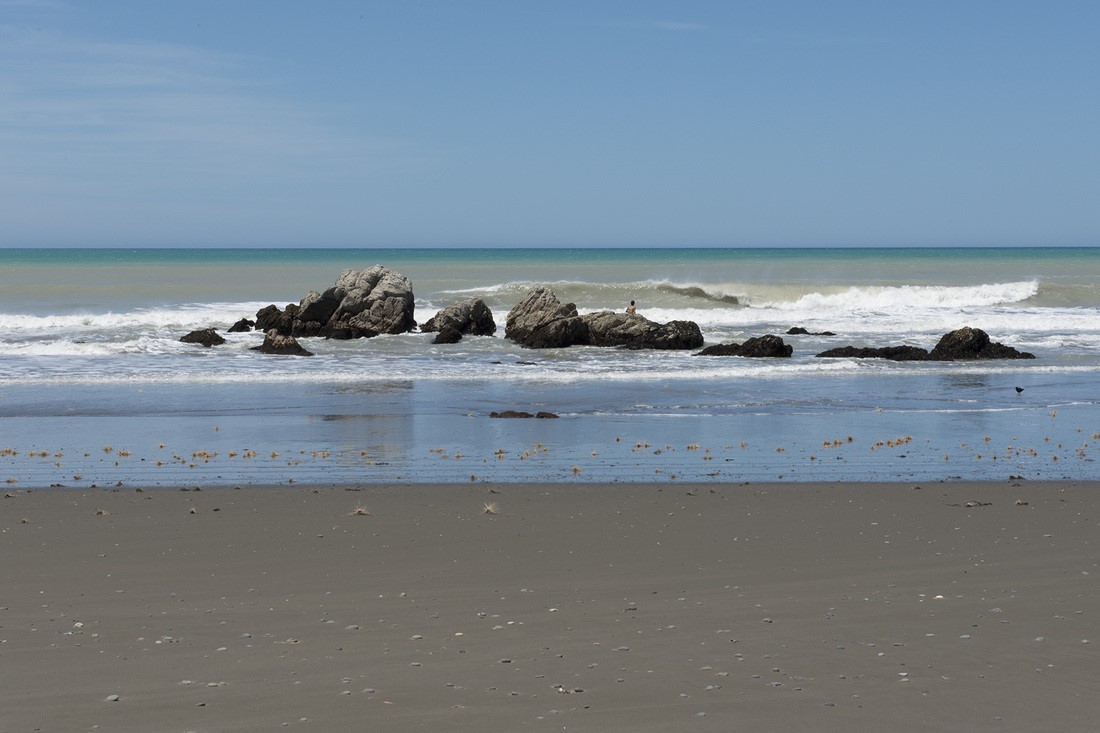
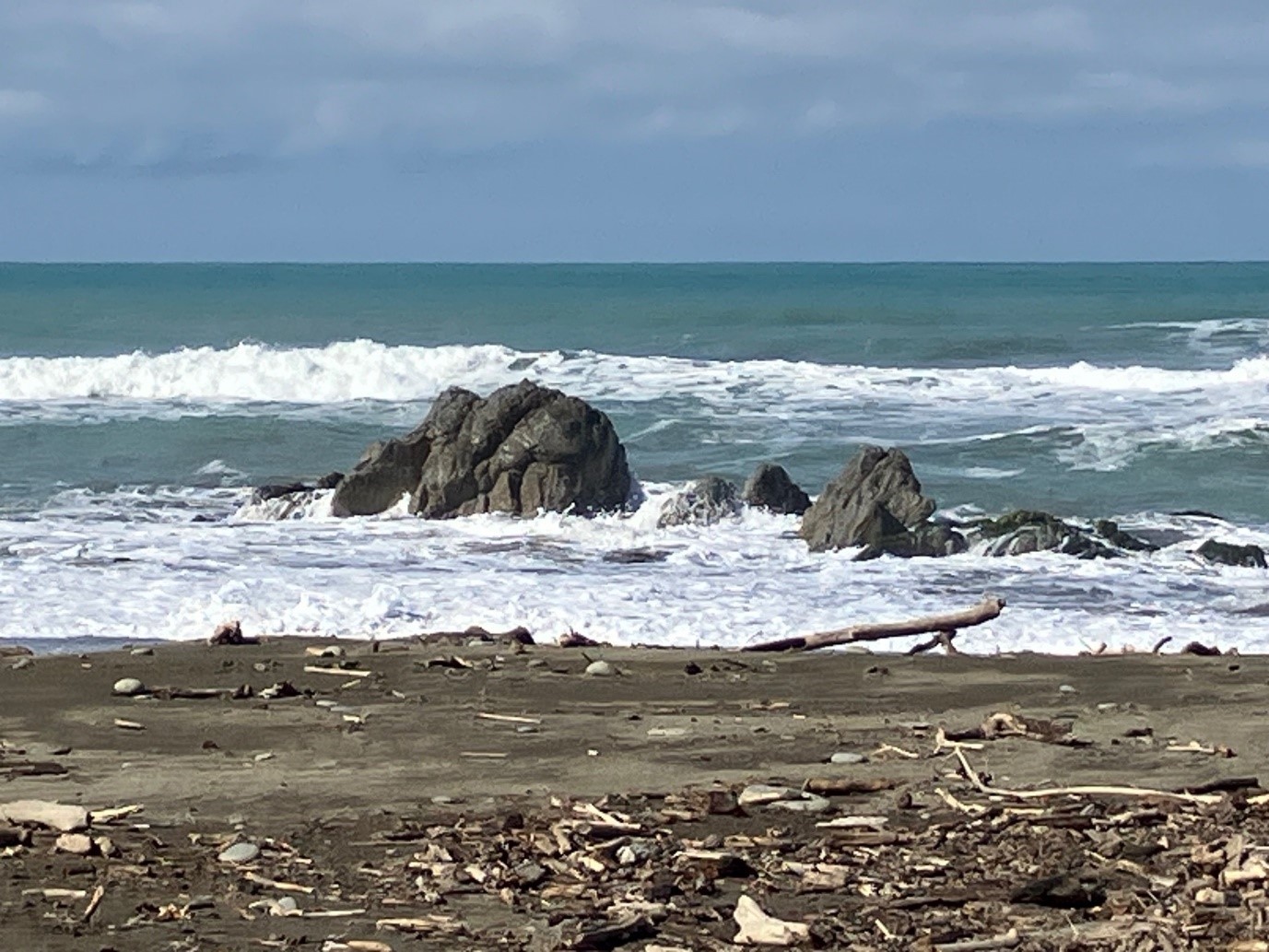
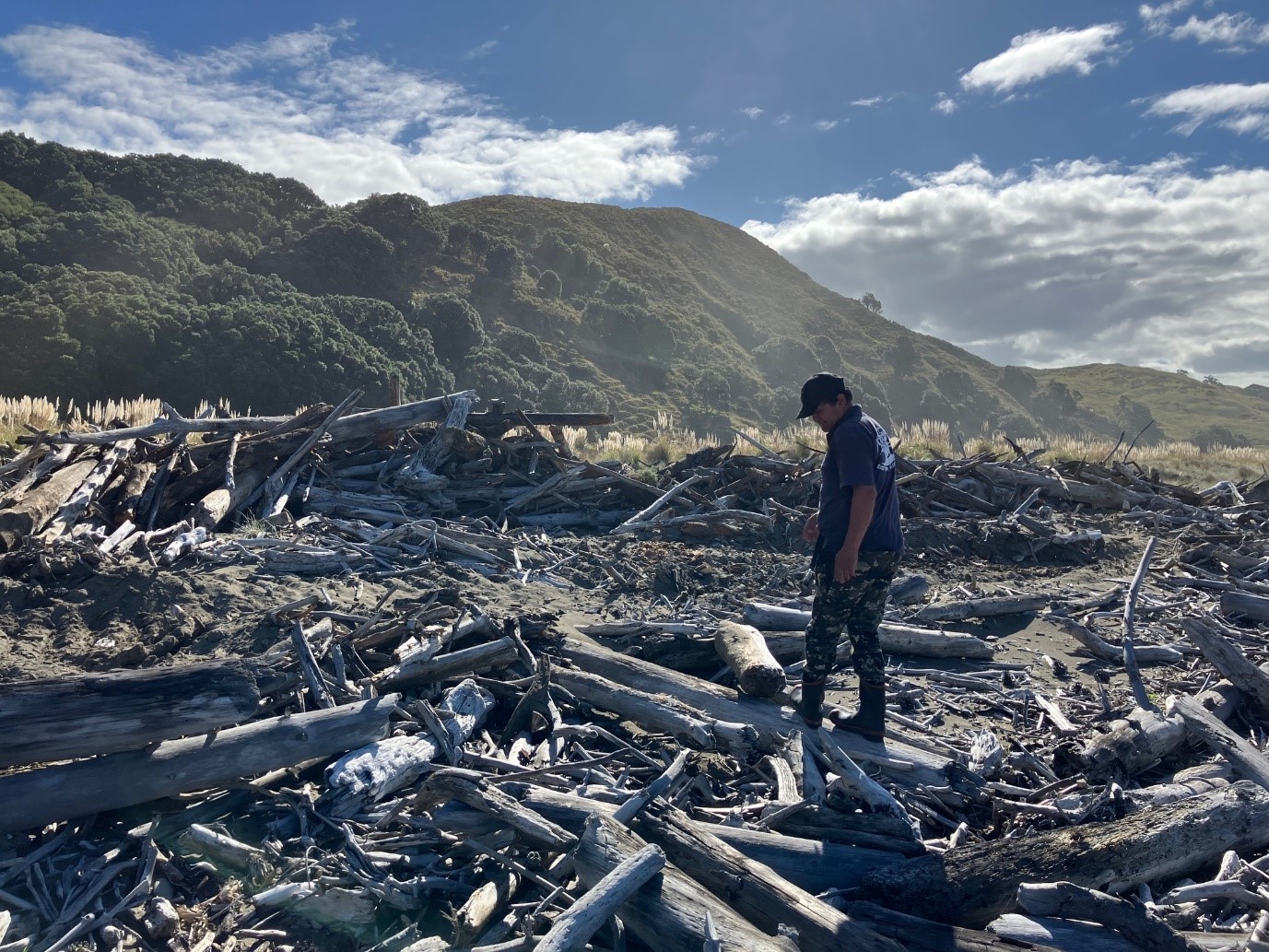
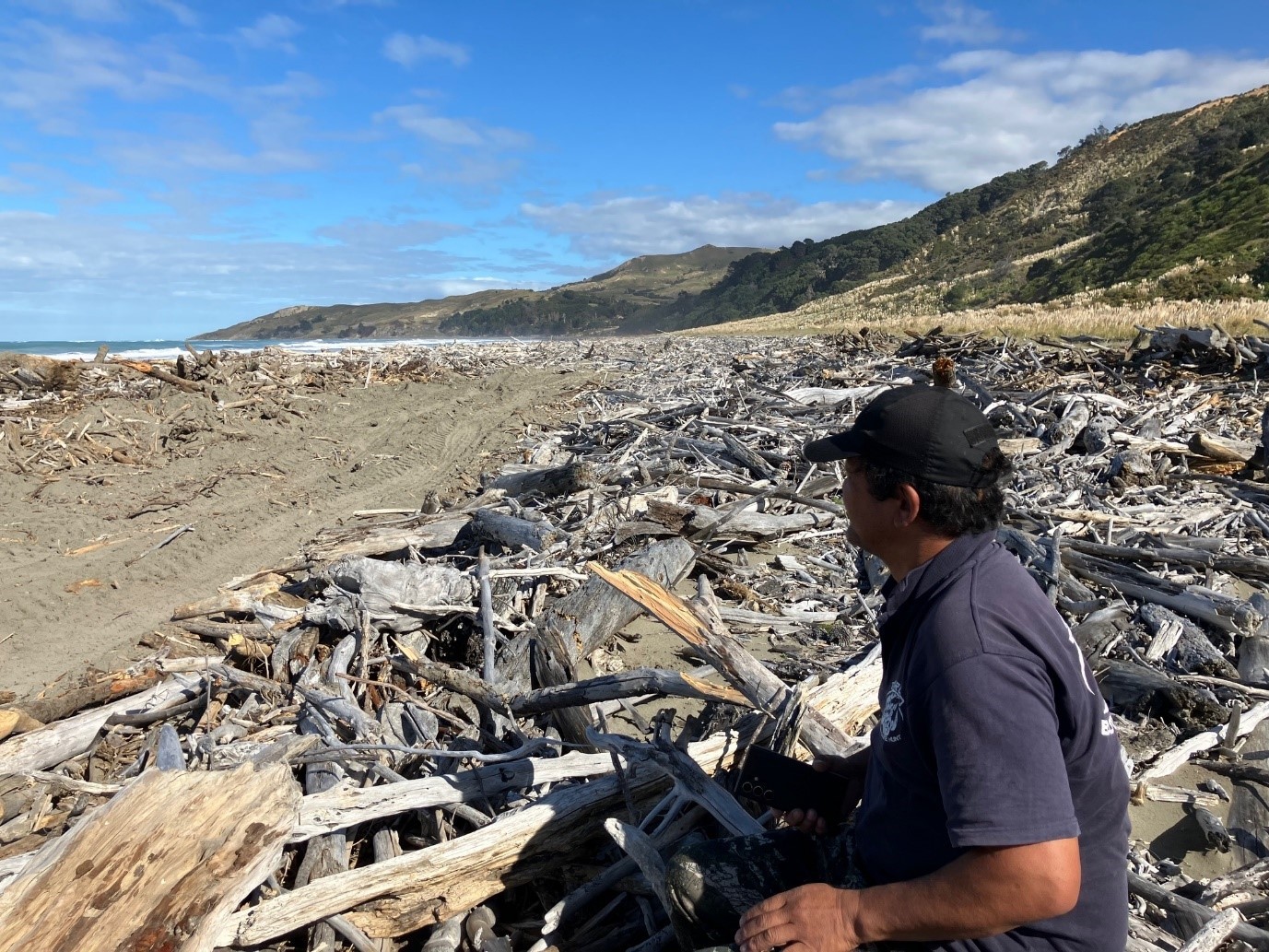
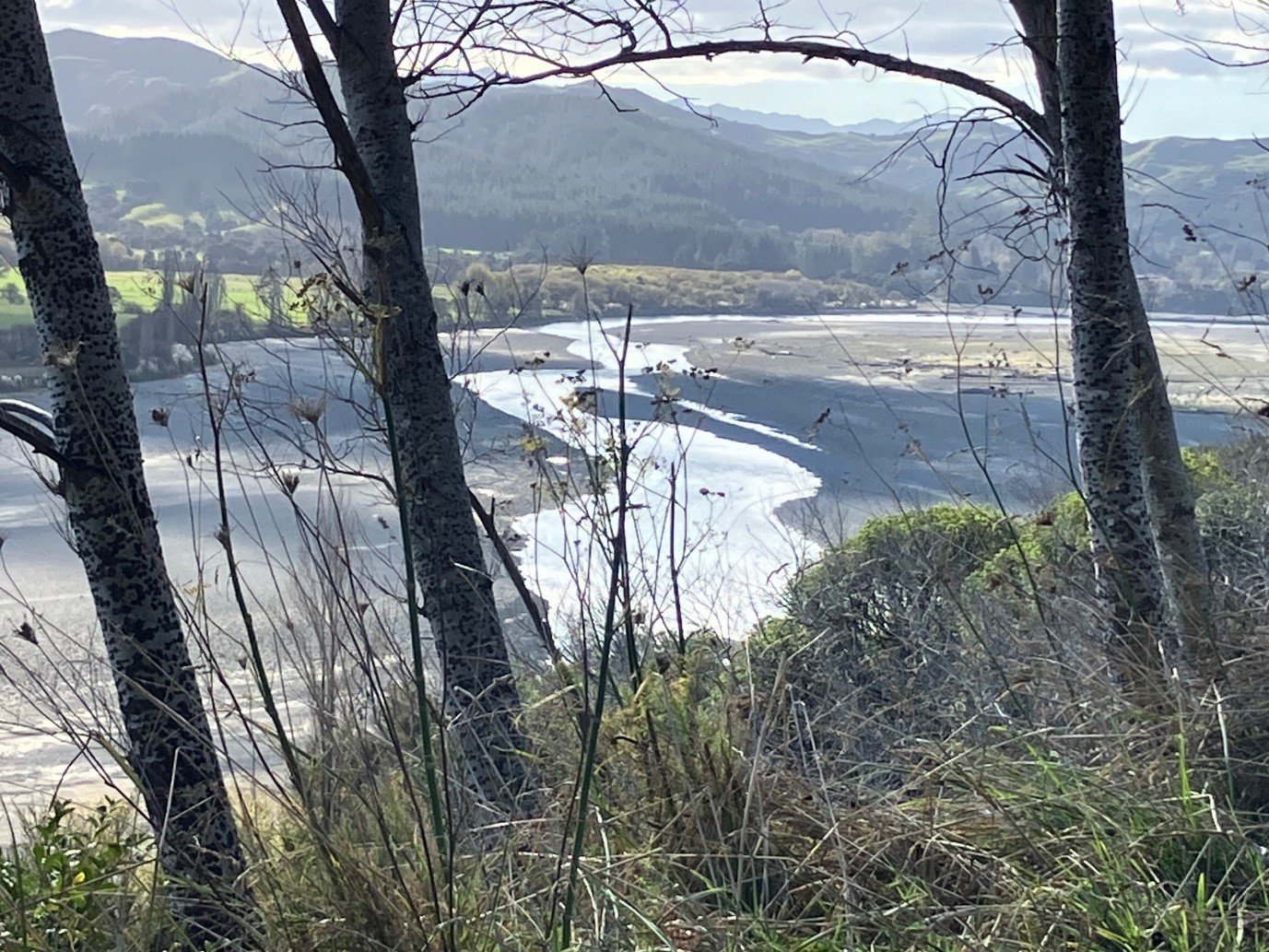
The Waiapu River above during a calm period of weather, winds it's way to the sea and Tikapa Beach.
Below is the road to Tikapa - a two-and-a-half-hour drive from Gisborne with a mix of gravel and tar-sealed roads once you're past Ruatorea. Well worth the drive.
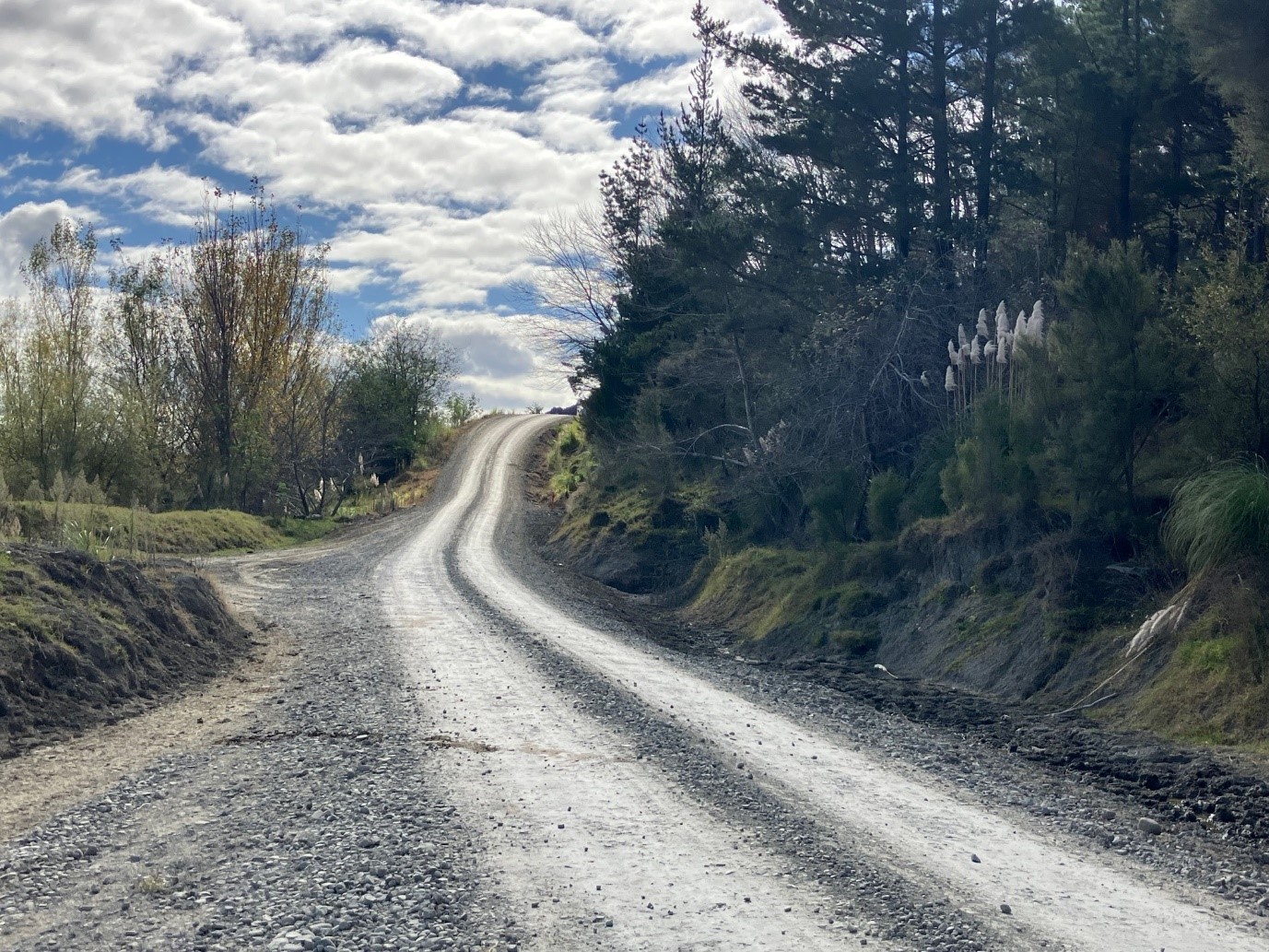
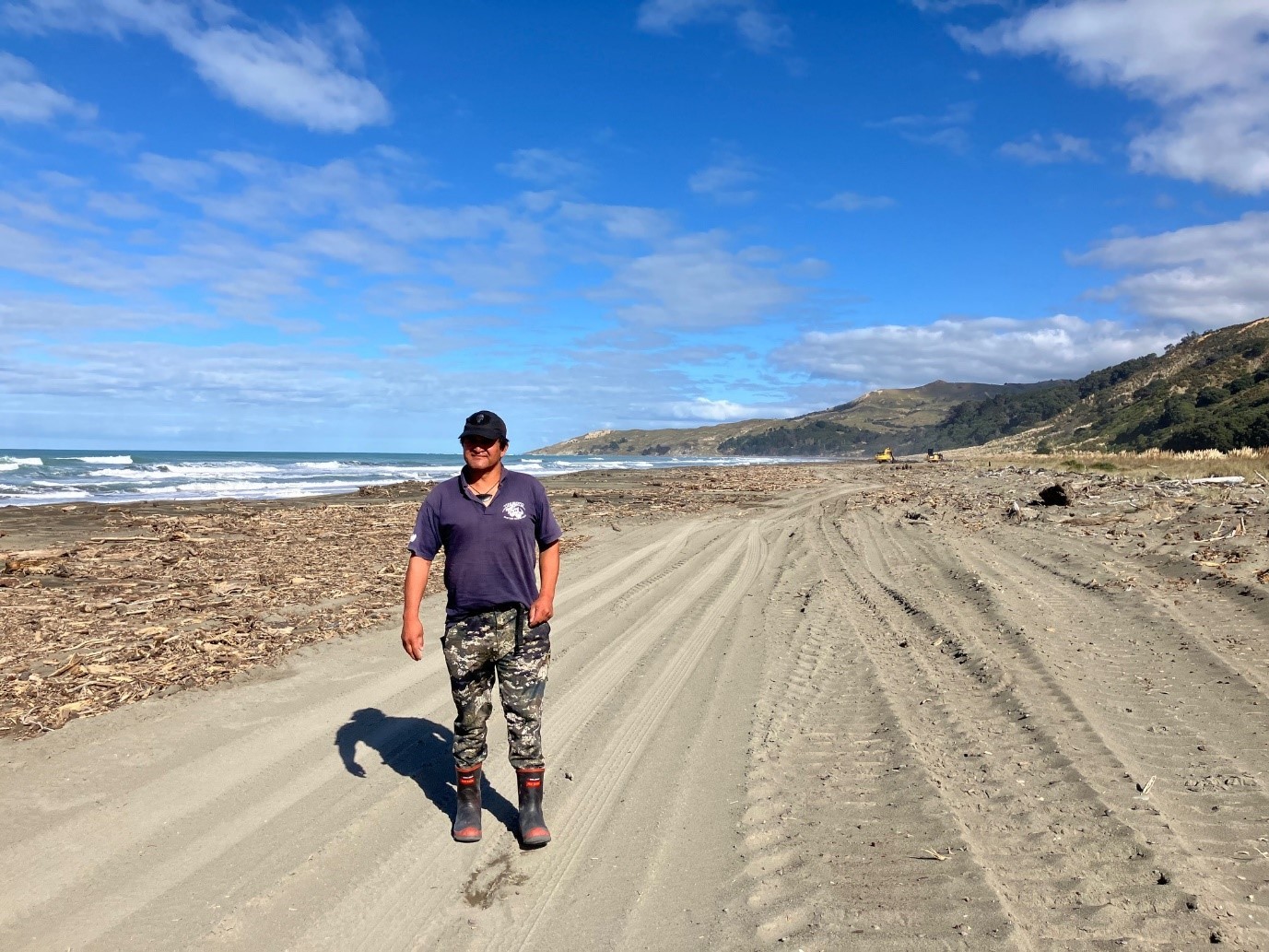
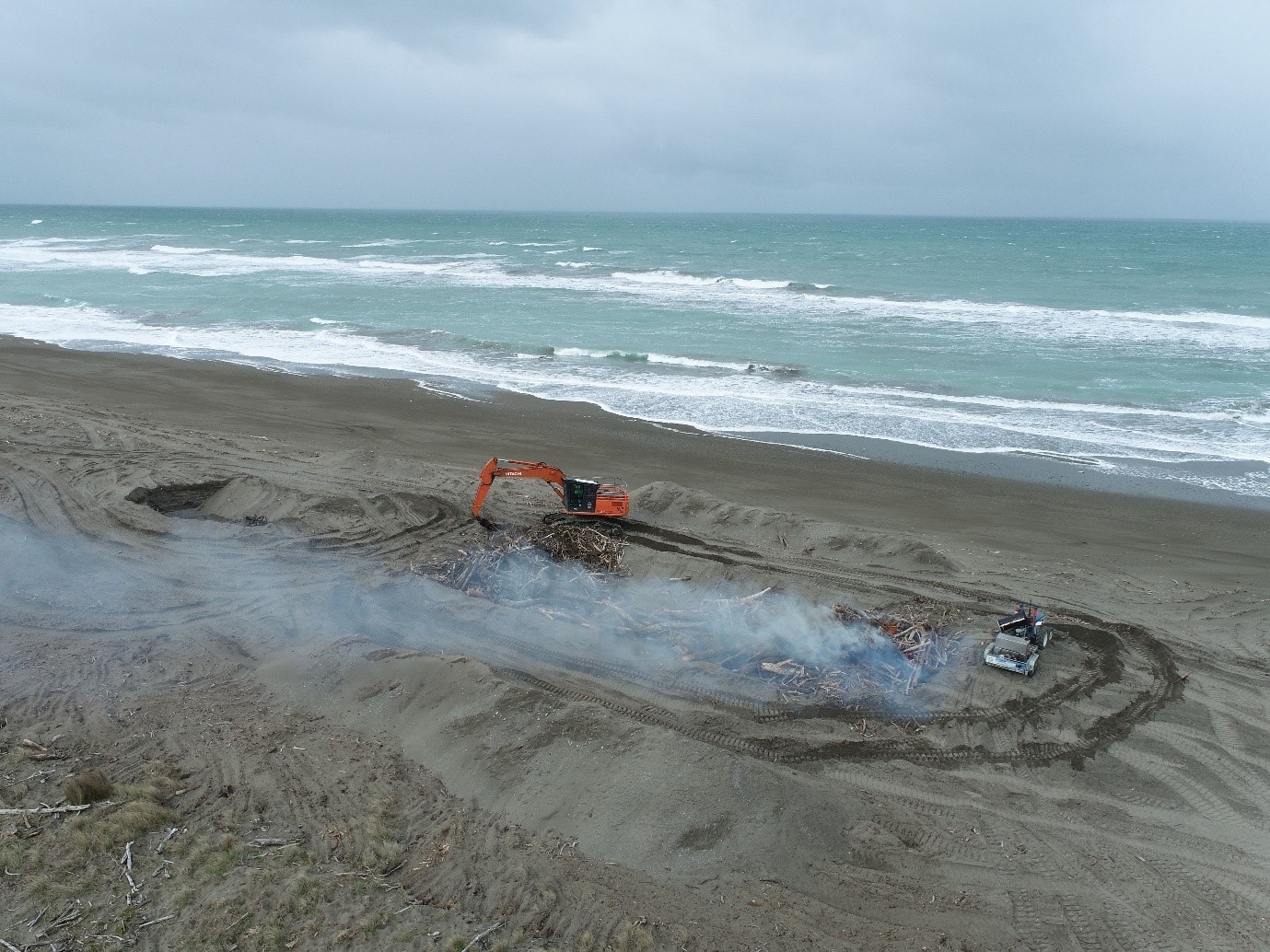
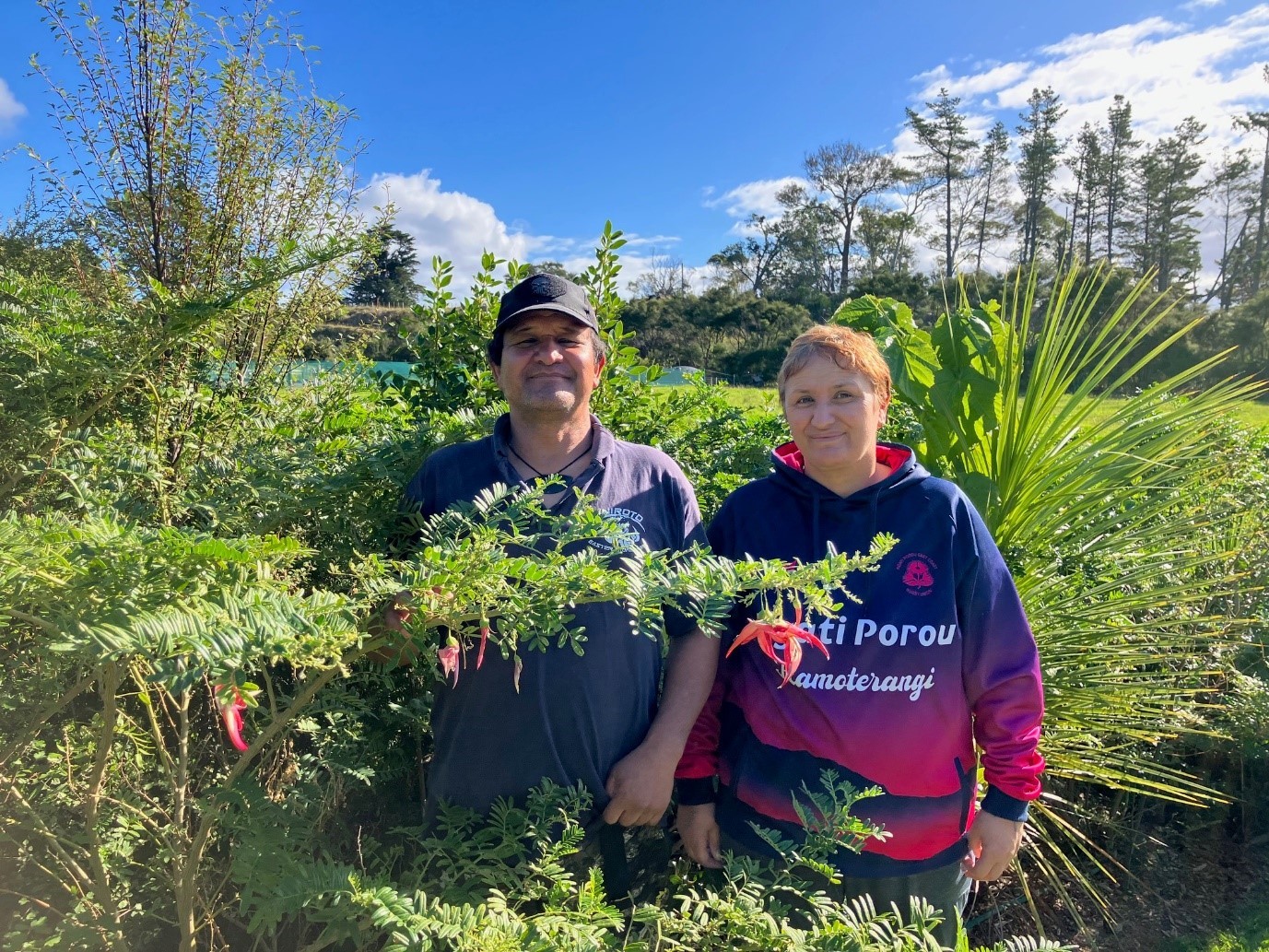
Graeme, 57, lives in Tikapa. He and his wife Makere raised their three children there and they live next door to his parents. The couple are in front of a blooming kakabeak plant in their native garden which boasts the most kakabeaks in the country. Their garden will open to the public for the first time in September during an inaugural Kakabeak Festival.